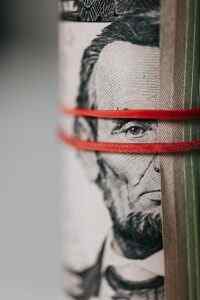Trichotillomania: A Descent into Madness
The Secrecy of Pulling
In the labyrinthine corridors of my mind, where shadows dance and secrets hide, there lies a compulsion, an insidious whisper that has haunted me for over two decades. It began in the solitude of my teenage years, a seemingly innocuous gesture, a gentle tug at a stray hair. But like a spider’s web, it ensnared me, drawing me deeper into its intricate and tortuous embrace.
The act of pulling became a clandestine ritual, performed in the privacy of my room, away from prying eyes. I would sit for hours, my fingers dancing across my scalp, seeking out the imperfections, the hairs that dared to stray from their ordered ranks. With each pull, a perverse sense of satisfaction washed over me, a momentary reprieve from the chaos that swirled within.
The Isolation and Shame
As the damage became more apparent, bald patches emerging like constellations on my scalp, I felt a growing sense of isolation and shame. I resorted to elaborate measures to conceal my secret, wearing hats and scarves, avoiding social situations where my hair might be exposed. The burden of my compulsion became an invisible prison, confining me to the shadows.
In the company of others, I felt like an alien, a freak. I imagined their eyes scanning my scalp, silently judging me for my unsightly affliction. The fear of discovery consumed me, driving me deeper into secrecy and isolation.
The Comfort in Pulling
Despite the negative consequences, I found a perverse comfort in the act of pulling. When I pulled, the world outside faded away, replaced by a strange and distorted reality. The worries and anxieties that plagued me receded, leaving a sense of calm and control.
It was as if my hair pulling was a coping mechanism, a way to escape the overwhelming challenges of my everyday life. The physical pain was a welcome distraction from the emotional turmoil that churned within me.
The Discovery of a Name
It was only years later that I stumbled upon the term “trichotillomania.” The word, with its unfamiliar syllables, felt like an intrusion upon my private struggle. But it also sparked a quest for knowledge, a desire to understand the nature of my affliction.
I devoured clinical literature, medical journals, and online forums, desperate for answers. I learned that trichotillomania is a mental illness, characterized by an irresistible urge to pull out hair from one’s scalp, eyebrows, eyelashes, or other areas of the body. I was not alone in my struggle; there were others who shared this bizarre and misunderstood condition.
The Prevalence and Treatment of Trichotillomania
Trichotillomania is a relatively common condition, affecting approximately 1-2% of the population. It is more prevalent in women than men and typically begins in childhood or adolescence.
Despite its prevalence, trichotillomania is often underdiagnosed and undertreated. Many sufferers experience intense shame and embarrassment, leading to delayed diagnosis and treatment.
Cognitive behavioral therapy (CBT) is typically employed as a treatment method for trichotillomania. CBT aims to help individuals identify and change the thoughts and behaviors that contribute to their hair pulling. While CBT can be effective in reducing hair pulling behavior, long-term effectiveness remains uncertain.
The Power of Knowledge and Writing
Despite my extensive knowledge of trichotillomania, it has done little to diminish the grip the illness has on me. The urge to pull remains, a constant companion, whispering in my ear.
However, I have found a transformative power in writing about my struggles. The process of putting words to my experience is arduous and incremental, but it gradually provides me with a sense of control and empowerment over my illness.
By sharing my story, I hope to break the silence and stigma surrounding trichotillomania. I want others who are struggling with this condition to know that they are not alone.
The Myth of Recovery
As I reflect on my journey with trichotillomania, I question the concept of recovery. Is it a clear-cut destination, a point at which the illness is vanquished and the sufferer is restored to their former self?
I have come to believe that recovery from trichotillomania is a more nuanced and ongoing process. It is not about erasing the past or pretending that the illness never happened. Rather, it is about learning to manage and contain the illness within oneself.
Conclusion
In the tapestry of my life, trichotillomania remains an enduring thread. It has shaped me, challenged me, and brought me to the brink of despair. But it has also taught me resilience, self-acceptance, and the power of human connection.
As I envision my future self, I see a woman with long, dark-and-shot-with-silver curls. She is confident, self-assured, and at peace with her past. But within her, there still resides a whisper, a remnant of her struggle with trichotillomania.
And I know that this whisper will always be a part of me, a reminder of the journey I have traveled and the strength I have gained along the way.







